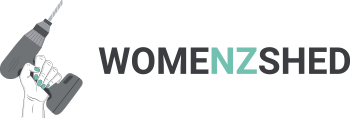Electrical Safety for Members
As part of the Shed Member Safety Induction process, please read the below information.
Adapted from APPENDIX 3 of the ACCS Electrical Safety Policy 2021
As part of the Shed Member Safety Induction process, please read the following information. You will be asked to complete questions online simply to show that you have read and understood it.
Faults and repairs
-
-
All electrical repair work shall be carried out by qualified persons who have current registration and practising licenses as Electrical Service Technicians or Electricians.
-
All electrical appliances that fail electrical safety tests shall be taken out of service or rendered inoperable until the appliance is checked and/or repaired by qualified persons as above.
-
Faulty equipment shall be immediately reported to the Duty Manager.
-
Faulty equipment shall be switched off and removed from service, or if unable to be moved, left with a clear warning notice if it is likely to be a hazard to other Members.
-
Faults in fixed wiring shall be reported directly to the Coordinator (in person or via email, text or phone call).
-
-
Safe working practices
-
Do not interfere with or alter the fixed electrical supply to any part of the Shed premises.
-
Always visually inspect equipment before use. Do not use electrical equipment that has frayed or exposed leads or faulty or damaged plugs.
-
Protect electrical leads from mechanical, chemical, or heat damage.
-
When an item of equipment is situated at a distance from a power-point, the electrical lead should not run along the floor or be hooked around other machines. If necessary, place hooks along the wall to raise the lead above the floor.
-
Do not use extension cords as a substitute for fixed wiring. Additional power outlets should be arranged where necessary.
-
When power boxes are used that enable a number of appliances to be run from one power outlet, care must be taken to ensure that the circuit is not overloaded. Where possible, use power boxes with circuit breakers attached. However, it is better to once again request more permanent power outlets.
-
Keep clothes, paper and other flammable materials well clear of heaters and other equipment producing heat as a function of their operation.
-
Keep all objects and dust away from air vents required by equipment for cooling to reduce the risk of fire.
-
Liquid spills should be immediately removed as these can cause electrical short circuits that may lead to metal cases becoming ‘live’ or to fire.
-
Construction, alterations or repairs of non-Shed electrical equipment, e.g. items brought in for repair by the public, should be tested prior to use by qualified persons who have current registration and practising licenses as Electrical Service Technicians or Electricians. This must be made clear to the owner prior to starting any work.
-
Do not open covers on any equipment that leaves potentially ‘live’ circuits exposed.
-
In wet or damp conditions a residual current device should be used. Protective rubber gloves and boots should be worn.
-
Display warning notices in places where specific dangers are present – high voltage, high power transmitters, lasers, unearthed equipment, etc.
-
Turn off all electrical apparatus that is not in use.
-
Any electrical equipment left operating and unattended should have the control switch clearly marked and instructions for switching off in the case of emergency posted in a prominent position
-
Do not use three-phase outlets for single-phase equipment.
-
